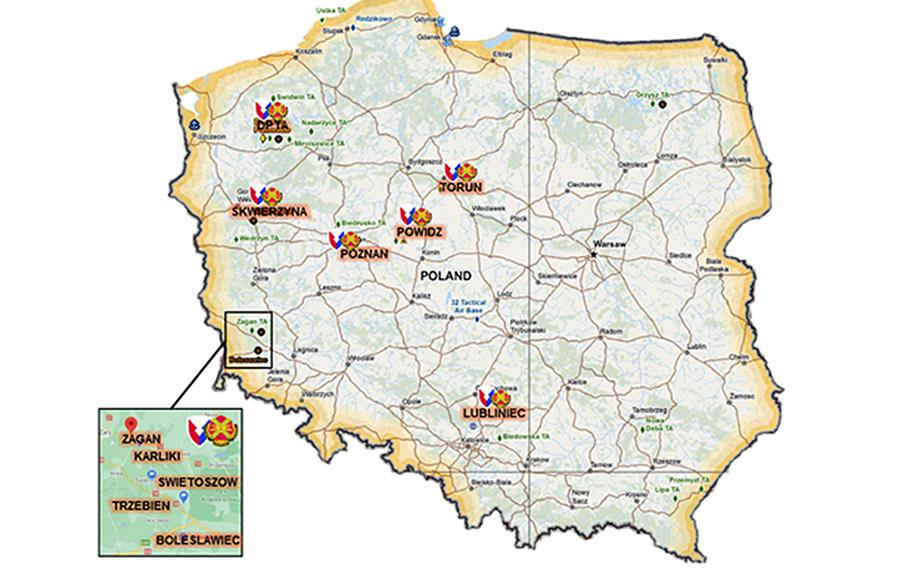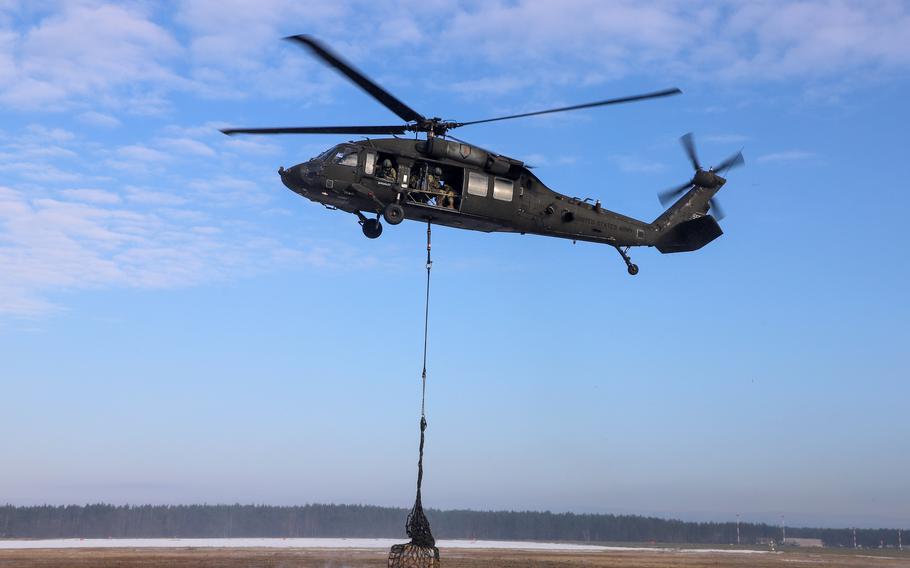
The U.S. military operates at multiple sites across Poland, including the Army installations shown here. An agreement between Washington and Warsaw calls for Poland to spend on facilities required by U.S. forces in the country. A finalized version of the 2024 defense authorization bill shows Warsaw spending nearly $300 million on base upgrades. (U.S. Army)
Poland plans to spend nearly $300 million to upgrade several military sites used by U.S. forces in the country, a move expected to eventually improve the quality of life for soldiers deployed there.
A bipartisan group of U.S. lawmakers on Wednesday released a finalized version of the 2024 National Defense Authorization Act, which is expected to be voted on as early as next week.
The $866 billion defense bill detailed upgrades in store for the U.S. military operating in Poland that are to be paid for by Warsaw, rather than U.S. taxpayers.
The NDAA authorizes the Pentagon to accept seven construction projects with in-kind contributions totaling $284.5 million from Poland.
The projects are part of a bilateral defense security cooperation agreement that requires Poland to pick up a large amount of the infrastructure costs needed to support U.S. troops in the country.
The largest initiative calls for $93 million to be spent on a new Army barracks and a dining facility in Powidz, which has emerged as a major aviation and logistical hub for the U.S. military in Poland.

U.S. Army soldiers practice hooking up a sling load to a UH-60 Black Hawk helicopter, at Powidz, Poland, on Nov. 30, 2023. A recent agreement between Washington and Warsaw calls for Poland to upgrade facilities used by U.S. forces in the country, including a $35 million rotary wing apron at Powidz. (Elsi Delgado/U.S. Army)
The living conditions at the base are among the most austere for troops carrying out missions in the central European country.
Other projects include a $35 million rotary wing apron in Powidz, fuel storage and rail improvements in Swietoszow, and aerial port and taxiway upgrades in Wroclaw.
The Poles also will spend $16.2 million to establish a “company operations facility” for U.S. special operations troops doing missions in Lubliniec, a town in the south-central part of the country.
The U.S. in recent years has been steadily building up its force in Poland, which has become the centerpiece of the military’s push to counter Russia and fortify NATO’s eastern flank.
In March, the Pentagon established its first permanent garrison in the Polish city of Poznan, where an Army headquarters manages operations stretching from the Baltics to Bulgaria.
The garrison alone oversees about a dozen different sites, which feature a mix of units rotating in and out of Poland.
Poland also has been increasing its own defense spending, with major investments in weapons systems, including U.S. Abrams tanks.
The 2024 NDAA seeks to reward countries like Poland that meet NATO defense spending benchmarks calling for at least 2% of gross domestic product to be dedicated to military matters. Currently, only seven of NATO’s 31 members hit the mark.
The failure of many allies in Europe to sufficiently increase defense spending has been a major point of contention over the years, with several U.S. administrations calling for allies to shoulder a larger share of the security burden.
When it comes to basing, training and exercises, Defense Secretary Lloyd Austin should prioritize allies that have reached the 2% GDP benchmark, the NDAA states.